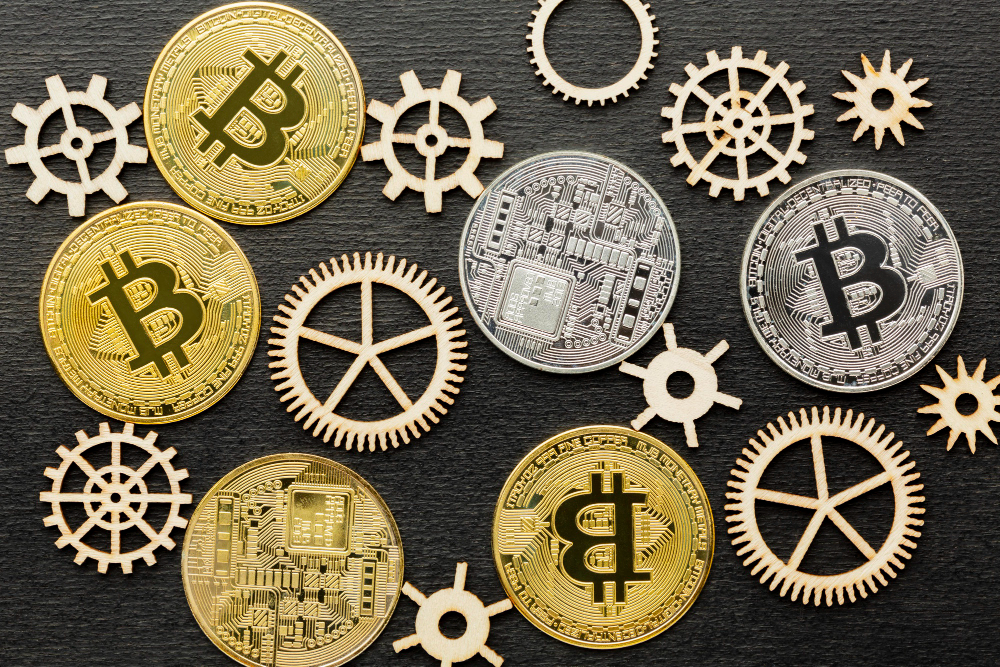We have all had Bitcoin mining on our lips the past couple of years, and it is no wonder why. It’s an exciting way to get paid in bitcoins and harden the network. But like everything that appears too good to be true, there are also its own dangers and benefits.
If you’re considering getting into bitcoin mining, it may be valuable to learn about the pros and cons. In this article, OurMiningClub will sort through what you can expect to win—and what you need to look out for.
The Pros of Bitcoin Mining
1. Earning Bitcoin
The most straightforward reward of bitcoin mining is that you get paid in bitcoins. When you successfully mine a block, you’re rewarded brand new bitcoins. The more valuable Bitcoin becomes, the higher the potential reward. Bitcoin broke new all-time highs, and some miners have become very rich people in the process.
What you’re rewarded with: New bitcoins and network transaction fees.
How you get it: When Bitcoin price increases, so will your profit.
2. Passive Income
Once you have your rig set up and running, it will be mining for you 24 hours a day, 7 days a week. That is, you can make bitcoin in an automatic fashion without having to do much once the whole setup is installed and running. This is one type of money-making that does not involve punching a clock on a daily basis.
How it works: Let your equipment grind away overnight, and you can earn Bitcoin 24/7.
3. Tech Know-How and Community
Mining is not just creating bitcoins; it’s also an educational experience. You’ll have a chance to explore the universe of blockchain technology and discover how Bitcoin’s network operates. And, you’ll be connected to a growing global network of miners and tech enthusiasts.
Learn and get: Enhance your technical skills, learn problem-solving, and network with fellow miners worldwide.
Stay informed: Be part of the revolution in cryptocurrency.
4. Long-Term Investment
Most miners consider bitcoin mining to be an investment, as opposed to a way of getting quick money. If you hold the bitcoins that you mined for long enough, you’ll be able to reap future appreciation in price. Bitcoin has a 21 million coin cap, therefore it is limited money, something others believe will propel its price in the future.
The “HODL” tactic: Mine, wait, and hold out until the long-term value of Bitcoin increases.
The Risks of Bitcoin Mining
1. Astronomical Upfront Expenses
Getting started with bitcoin mining isn’t cheap. You’ll need to invest in powerful mining hardware, like ASIC miners, and additional equipment like cooling systems and power supplies. All of these can add up quickly, and it can take months or even years to see a return on your investment.
Upfront costs: Equipment, electricity, and setup can cost thousands of dollars.
It’s not inexpensive: Budget for a large startup investment.
2. Electric Bills to Pay
Bitcoin mining uses energy. The bigger and more powerful your mining computer is, the more electricity it will use. In certain locations, electricity prices are so high that they take money out of profits—or even turn mining into a money-loser. So, it’s important to consider this in the thinking about mining.
Energy use: Mining requires lots of power, especially if you’re running multiple rigs.
Cost vs. reward: Make sure your rewards are more than your electricity expenses.
3. Mining Difficulty Increases With Time
The more and more miners in the bitcoin mining pool, the harder it is. The difficulty of the mining is adjusted automatically so that there is always the same amount of blocks being created. What this really means is that you will always be being pushed to upgrade your hardware just so that you can stay in line, and it’s expensive.
Competition increased: The more miners, the harder math problems to solve.
Old gear: Your equipment might not be as durable as the task becomes more challenging.
4. Volatility in the price of Bitcoin
Prices of bitcoins change tremendously. It is profitable to mine when prices rise, but a drop in Bitcoin price will ruin your bottom line. Because of the crash of Bitcoin value, you will recover your cost or even earn a profit later.
Risk of the market: Bitcoin has very volatile price movements that impact your return.
Price volatility: Yesterday’s gains, today’s losses.
5. Regulatory Risk
Bitcoin mining is stuck in regulatory limbo. It’s tolerated by data in some countries, banned or strictly regulated in others. Rules can change overnight, and if a government closes down mining or slaps on additional taxes, it could make your mining rig unviable—or illegal.
Uncertainty: Governments can change laws impacting miners at any time.
Legal risk: Be sure to be familiar with local law before commencing.
Striking the Balance of Rewards and Risks
Bitcoin mining is a lucrative activity, but one must be cautioned regarding its perils as well. The trick lies in identifying both the reward and risk. One needs to do the arithmetic beforehand and determine whether the potential return will be worth the initial investment and the ongoing incurred fees.
Here are a few tips on reducing the risk and maximizing the reward:
Begin small: Don’t put all eggs in one basket. Begin small to try the waters of mining yourself.
Calculate all the costs: Don’t omit electricity, hardware replacement, and other recurring costs.
Watch Bitcoin prices: The market forces can turn in a matter of minutes, so stay connected.
Bitcoin mining is exciting and profitable, too, but don’t think of it as a get-rich-quick plan. You can make money with bitcoins with careful planning, and you can learn about the realm of cryptocurrency. But keep in mind that, like any investment, there are risks—most notably hardware expense, energy consumption, and the roller-coaster value of Bitcoin.
Don’t get involved without careful research, risk respect, and anticipation of the ride.
— Presented to you by OurMiningClub

